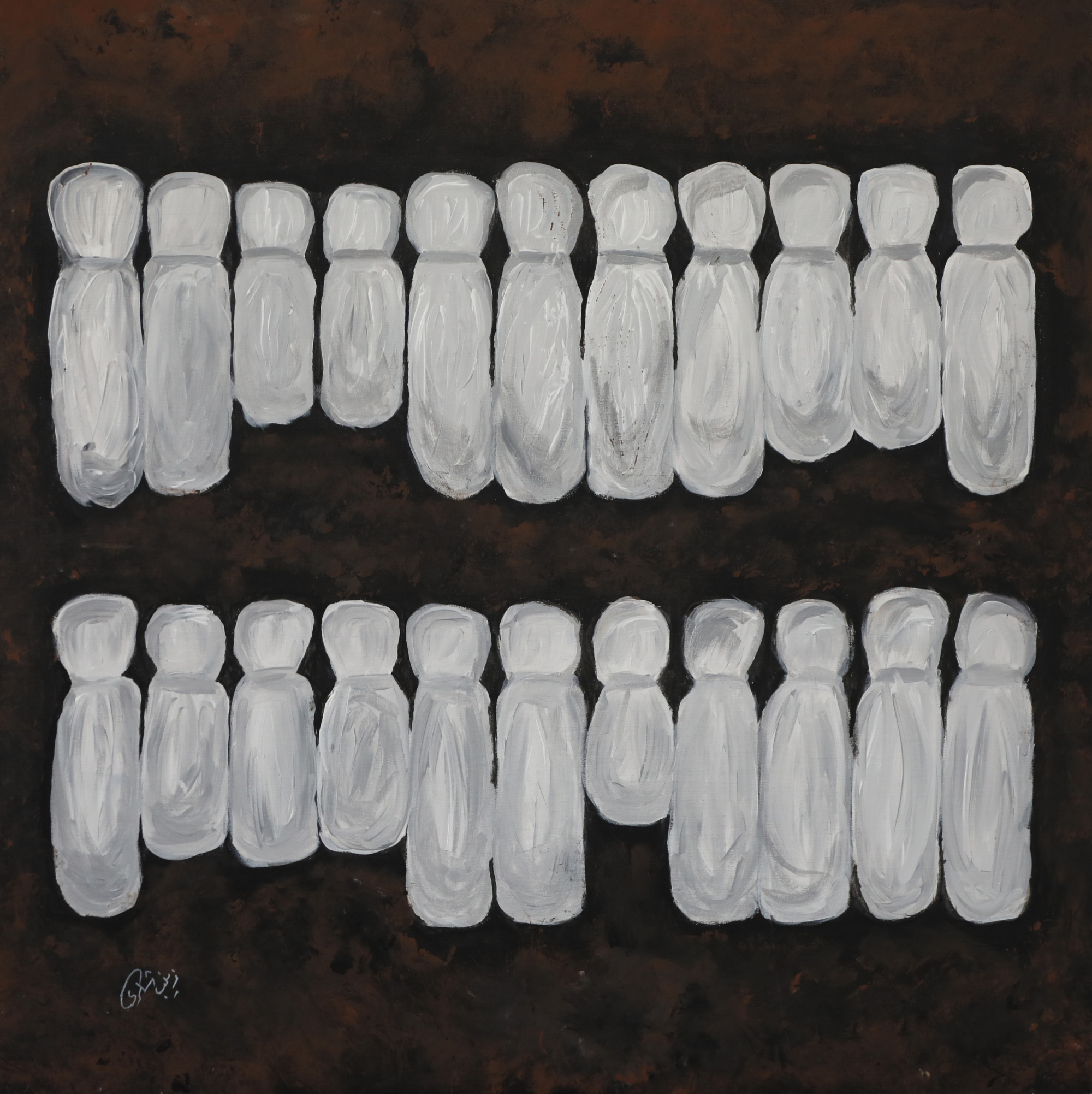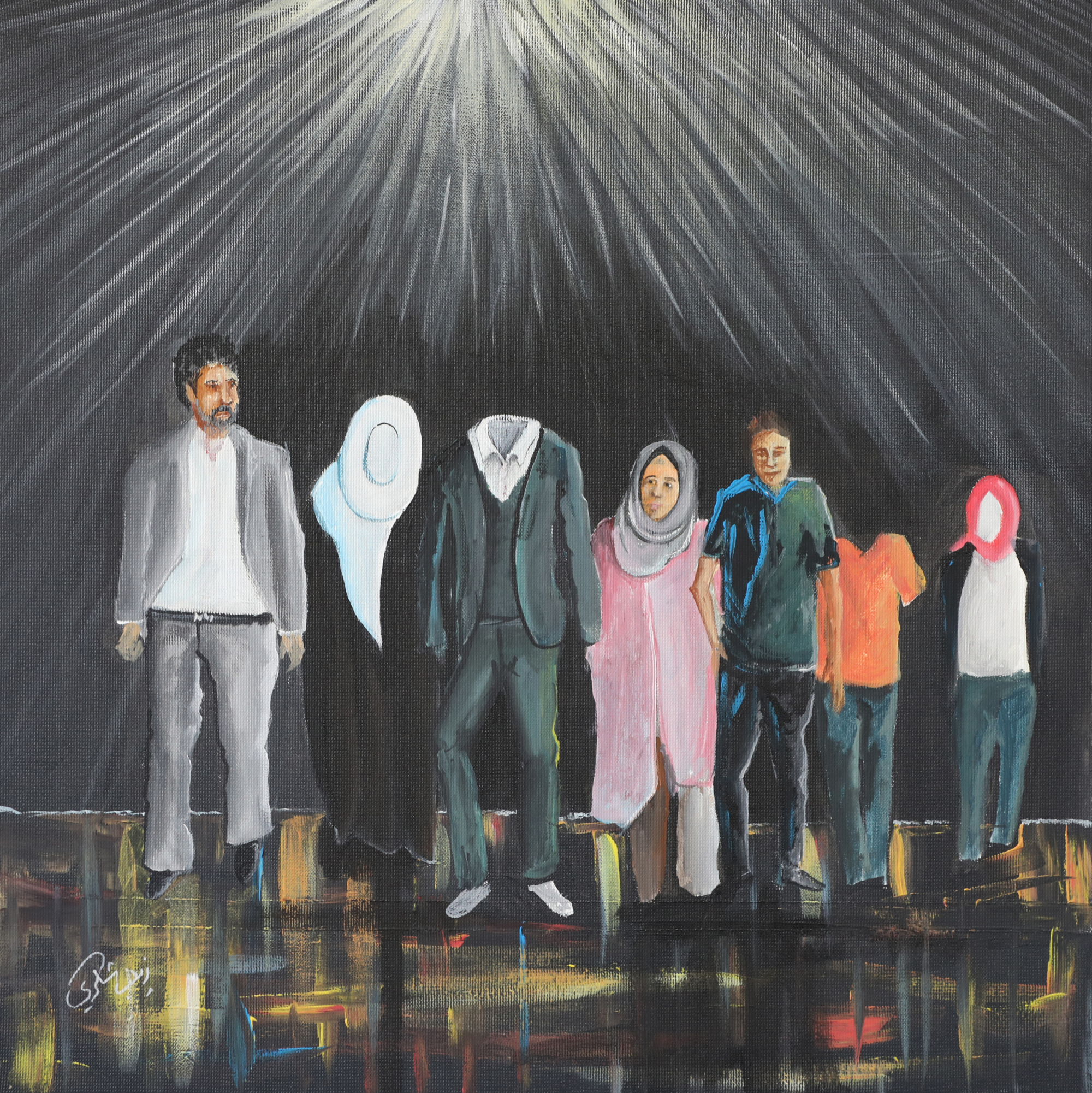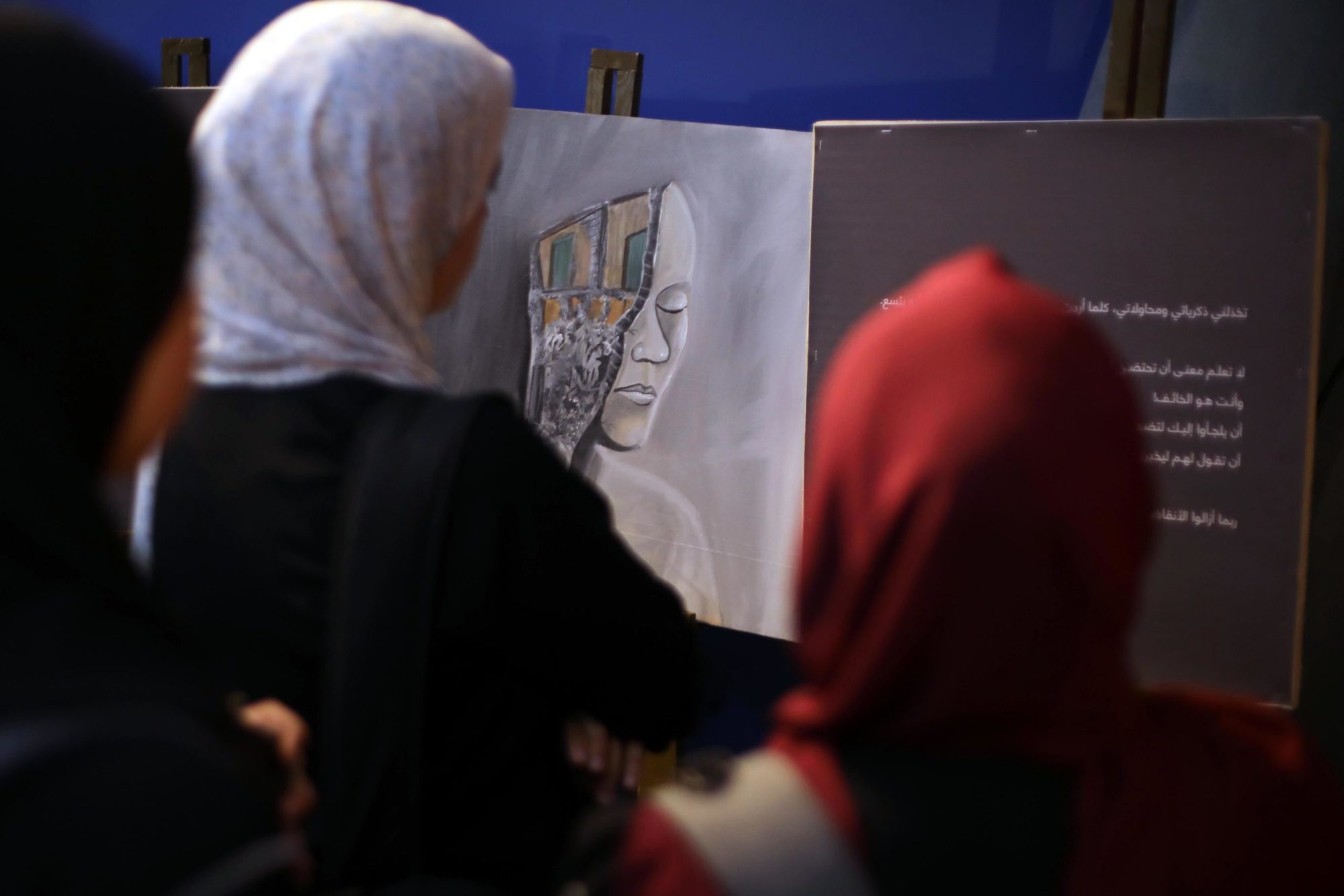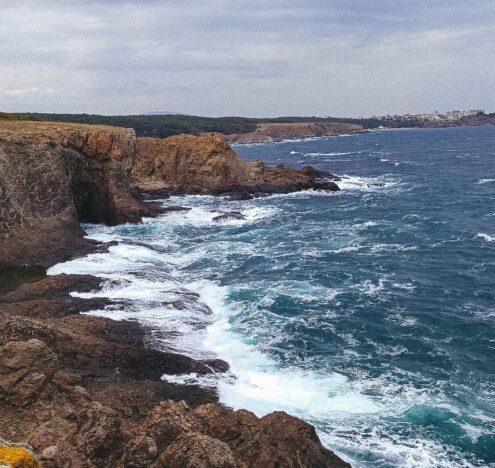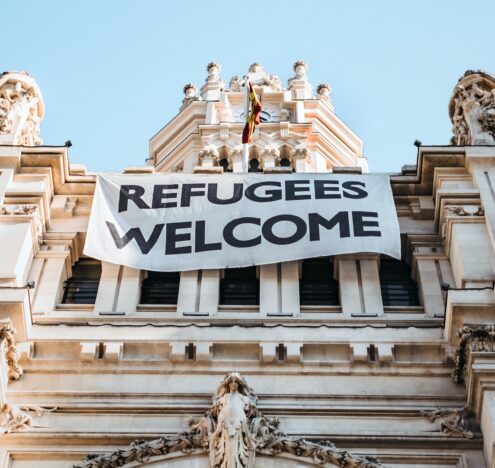“I still recall the last thing I spoke to the paramedic before my phone battery died, and I hear the sound of my phone dropping from my hand as the strikes hit again and again. I picture me losing my voice, struggling for breath, swallowing dirt and trying, and still trying to this day, in deep darkness, enormous suffering, and profound scars.” — Zainab Al-Qolaq, 22, artist, Gaza.
Every Palestinian has a wound that will never heal, a wound known as the Nakba, which started in 1948 and continues to this day. The Nakba refers to the historic loss of the Palestinian homeland to Israel. It also describes the ongoing occupation of Palestinian lands and the continual persecution and displacement we suffer. It began as an event but has stretched into generations, and, repeats — in the nature of trauma — in personal catastrophes. Over these years, as Palestinians we have lost not only our homes, land, and lives, but have also grown jaded and resigned. We have lost human sympathy for our losses, to the point that most of us believe it is “normal” to endure continual catastrophe.
Every Palestinian who has lived up to this point has lost something. For Zainab Al-Qolaq, her Nakba has an entirely different date. On May 16, 2021, Israeli warplanes bombed her home on Al-Wahda Street, west of Gaza City, killing 22 members of her family. Using heavy bombs, Israel decimated numerous buildings on the street. Forty-two people were killed in the attack, including 16 women and 10 children, and 50 more were injured that night.
Palestinians have lost human sympathy for our losses, to the point that most of us believe it is “normal” to endure continual catastrophe.
The Euro-Med Human Rights Monitor published a series of reports following the Israeli attack, including “Inescapable Hell,” “Left in Tatters,” and “One War Older.” Through field research, victim interviews, and field data analysis, the Monitor documented the results of “direct civilian targeting” during the attack and the complex psychological effects it had on the most vulnerable groups, including women and children. The papers also included a detailed analysis of Gaza’s economic and infrastructural damages.
“Zainab is a model and image of thousands of women and girls who suffer during and after the military attacks launched by (Israel) against civilians in Gaza,” said Maha Al-Husseini, Strategy Director at the Euro-Med Human Rights Monitor. He explained that her human story reflects many untold and unheard stories of women who lost family members and subsequently deal with post-traumatic stress disorder.
Zainab survived with her brother Osama and her father. While she was physically rescued from beneath the rubble of her house, her soul sustained wounds that are more complicated to heal.
SURVIVAL, ART, AND THE COMPLEXITY OF HEALING
Zainab was sinking in her thoughts. She recalled that while painting, she heard the voice of the paramedic who saved her over and over. At the two-day exhibition, she showed nine works depicting her anguish from the time her home was attacked, her 12-hour stay under the rubble, and then learning that she had lost 22 members of her family. “I felt like I was suffocating once again. I grabbed my phone, held on to it tightly, and memorized the number of the same paramedic in case of an emergency,” she said.
Zainab was an artist who used to paint life: the sea, seagulls, trees, snow, horses, homes, and rural roads. But after that day, she only painted death, which surrounded her and intensified within her as a daily nightmare. The most difficult work she drew, she said, was one where she painted a replica of a photograph of her family at her brother Taher’s graduation. In the photograph the family is laughing and joyful; in the painting, the martyrs, including her mother, sister Hana, and her two brothers Ahmed and Taher, are ghostly, empty clothes.
After a year of shock and suffering, Zainab decided to break her silence. Dozens of local, Arab, and worldwide media agencies attended her exhibition at the Euro-Med Human Rights Monitor’s office, crowding around Zainab in an effort to support and encourage her. While gallery openings are often joyful affairs, in this case, the gallery owner asked the audience not to celebrate and congratulate Zainab, but rather to honor her mourning.
In Zainab’s art, she painted her mother’s voice, sister’s hand, brothers’ expressions, the cracking shape of the wall in front of her, the earth that swallowed them up, the building that collapsed above them, the roofs that split on their backs, the stones that cut their bodies, the ashes that they breathed, the smell of the rubble and dirt that they swallowed, and the stones that separated her from the rest of the family members. These are her fractured and vivid memories of what happened at one o’clock in the morning, when Israeli planes destroyed her home, killing her family. She, too, still struggles with death.
“Only a year ago, I was surrounded by everyone I loved. It was the last time we were all together; I have photos and videos documenting the laughter of that day. I have photos in which no one is left alive but me. Loss renders us lifeless. The night haunts us, and its tragedies swallow us up,” Zainab stated in the exhibition booklet.
“My mother Amal, my sister Hana, my brother Ahmed, my older brother Taher, my grandfather Amin, my grandmother Saadia, and my aunt Baha, Zaid, Adam, and their mother Dua’a, their father Ezzat, my uncle’s wife Khatam, my uncle Fawaz, his son Abdul-Hamid, his middle son Sameh, and his wife Ayat, and their middle son Qusai, my cousin Reham, Hala, Rola, Yara, and their father Muhammad,” Zainab listed, as she recounted her losses in her paintings.
SEEKING JUSTICE
Hundreds of victims await justice for those responsible for the grave crimes perpetrated by the Israeli army during the attack. At the 49th session meetings, Zainab urged the UN Human Rights Council to report on the status of the investigation established in the aftermath of the Israeli strike. “I recognize that my loss is too severe to be compensated,” she told the council, “but I feel that my mother and brothers will not rest until their perpetrators are brought to justice.”
“I want to know what progress has been achieved by the commission of inquiry that you formed after the Israeli attack. Was it able to identify those responsible for wiping off my family? Will real actions be taken to prevent similar tragedies?” Zainab said in her speech to the UN commission members.
“I am now 22 and have lost 22 people,” She said. “Will I lose more when my next birthday comes before the international community takes tangible steps to bring me justice?”
Images of Zainab’s artwork provided by Euro-Med Monitor.
Photo of Zainab taken during her exhibition at the Euro-Med Monitor’s office in Gaza taken by Mahmoud Ajjour, a Gaza-based photographer.














